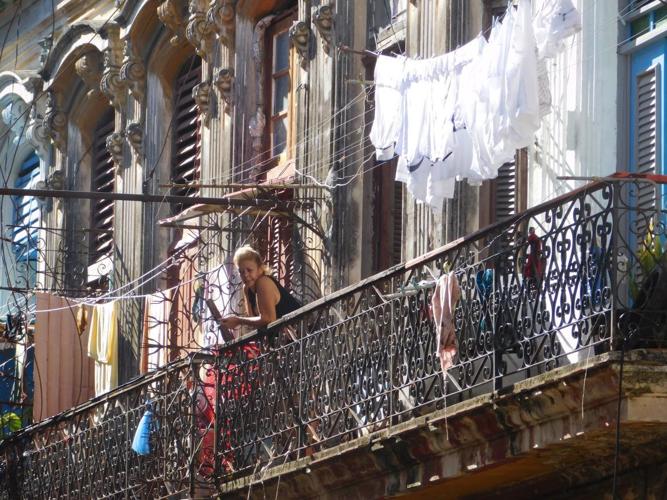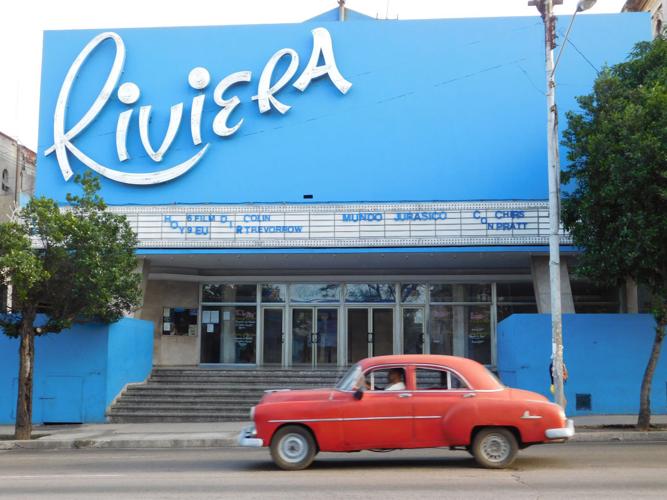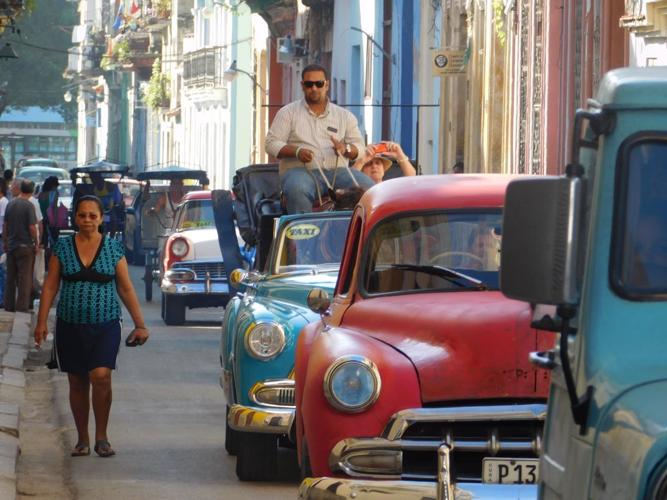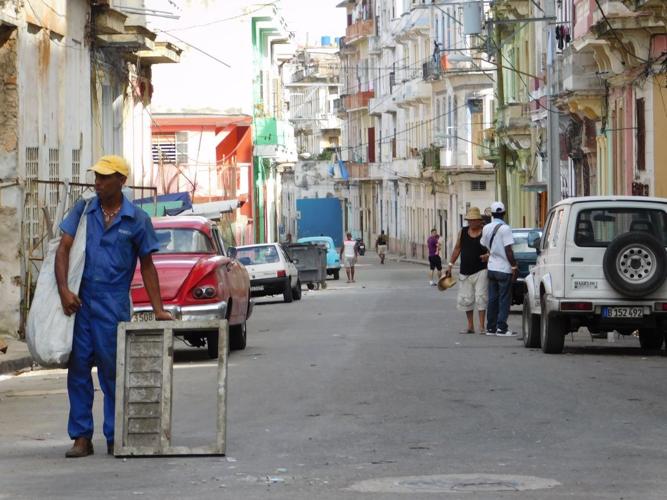Taking a stroll on the first night of the new year along the Malecón, Havana’s famed seawall, a couple approached us and asked that we take their photo. My wife, Linda, obliged.
After snapping photos on their smartphone, my wife and I spent a few minutes talking to the Havana couple, two physicians. They were curious about us and we about them.
What did we think about their city, they asked. Noting our Mexican-accented Spanish, they wondered where were we from.
And what, we asked in return, were they hoping to see for themselves and Cuba, as their country and ours engage in a critical remake of binational diplomatic and trade relations?
We believe our country will benefit, they both agreed. And we hope that those benefits will reach down to all Cubans, they added.
That was what we heard during our six-day visit to Havana: guarded optimism and hope.
Cuba’s 11 million people are embarking on significant changes, big and small, since President Obama announced in December 2014 he was taking down the remnants of the Sugar Cane Curtain initiated by President Kennedy.
The U.S. has reopened its Havana embassy after it ended diplomatic ties 55 years ago. Negotiations are underway to allow commercial air travel between the two countries. Cuba has released more than 50 political prisoners and the U.S. has removed Cuba from its list of countries that sponsor terrorism.
And Cubans are anxiously waiting for the U.S. to lift its strangling trade embargo, which along with inefficiencies in the Cuban economy have left the island 90 miles from the U.S. coast struggling.
For now, however, more American tourists are visiting Havana, bringing with them much-needed dollars and leaving with an awareness of the need to dismantle the embargo.
Our family of eight toured with a group of 19 people from the U.S., part of the 64 percent increase of American visitors in 2015 from 2014. And tourists from Canada and Western Europe, who have long had the freedom to travel to Cuba, have also increased in the past year. Last week, two Tucson groups visited the country.
Americans are limited to traveling to Cuba on cultural, professional or educational programs or to visit family members. We were on a cultural program. However, as travel restrictions are eased, more Americans will pour into Cuba where Havana, a city of 2 million, is already feeling the strain.
Hotel rooms are at a premium. The small José Martí International Airport bulges with travelers. The aging infrastructure is weighed down.
Havana is in a time warp. Many of its buildings in the historic center and older parts are deteriorating or in ruins. Its cars are old American ’50s classics, lovingly held together by Cuban ingenuity, and Russian Lada autos that resemble rolling tin cans. Importing cars is expensive.
There is an odd beauty to Havana. It is easy to imagine the former gracefulness of its Spanish colonial and pre-1959 Revolution structures, and admire those that have been restored with Cuban government support and international aid.
But one of Havana’s most visible attractions is what’s not there: crass commercialism. To wander the streets of Havana and not see McDonald’s, Walmart, Starbucks or Motel 6 was a respite. But with a full opening, the face of Havana is surely to change.
Despite the U.S. trade blockade, change has already come to Cuba. Since at least 1992 the U.S. has exported goods to Cuba, chiefly agricultural products. In 2001, Cuba spent $7 million and the following year it spiked to $146 million, according to the U.S. government. Trade peaked at $464 million in 2012 and last year settled down to $175 million.
It’s a one-way trade, however. The U.S. doesn’t import Cuban goods, not counting those American visitors who return home laden with rum, cigars, and arts and crafts.
While the Cuban Communist government has limited access to the Internet, throughout the city clusters of Cubanos gather outside tourist hotels and other places to pick up an Internet signal. It’s pricey but they text, send emails, Skype and laugh at videos on their smartphones and tablets. Incomes are very low by U.S. standards, but nearly half of Cubans have a cellphone.
The Havana I experienced last month was far different from the one I saw in the summer of 1989, when Cuba and its patron, the old Soviet Union, ruptured their ties. Cubans were unsettled as the country ventured into a period of economic crisis and scarcity. This time I felt Cubans were at ease and hopeful, even if food and products remain difficult to find.
The U.S. and Cuba share a long history, one that for the most part has been dominated by U.S. intervention and interests. The damaging embargo is a Cold War relic that should and will disappear.
Cubans, by and large, will welcome the opening, within and outside their country. But they don’t want to lose their Cuban identity or independence, the two doctors told us as the sun set on Havana’s Malecón.








